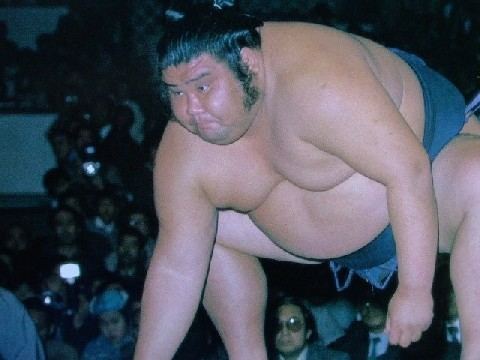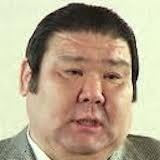Record 564-382-33 Highest rank Ozeki (May, 1983) Name Asashio IV Makuuchi rank Ozeki Weight 183 kg | Debut March, 1978 Retired March, 1989 Role Sumo Wrestler Height 1.83 m Martial art Sumo | |
 | ||
Born Suehiro Nagaoka December 9, 1955 (age 69) Kochi, Japan ( 1955-12-09 ) Championships 1 (Makuuchi)1 (Makushita) Special Prizes Outstanding Performance (10)Fighting Spirit (3)Technique (1) Similar People Hokuten\'yu Katsuhiko, Mutsuo Wakashimazu, Kitanoumi Toshimitsu, Chiyonofuji Mitsugu, Asahifuji Seiya | ||
Asashio Tarō IV (born 9 December 1955 as Suehiro Nagaoka) is a former sumo wrestler from Muroto, Kochi, Japan. His highest rank was ōzeki. He is currently the head coach of Takasago stable.
Contents
Career

Joining Takasago stable in March 1978 after a successful amateur sumo career at Kinki University, he began his professional career in the third highest makushita division, and was promoted to the top makuuchi division in November 1978. He initially competed under his own surname, Nagaoka, but in March 1979 he was given the shikona of Asashio (or "morning tide"), which had previously been used by several past greats in Takasago stable, including his own stablemaster. Asashio was promoted to komusubi in May 1980 and sekiwake in July 1980. In November 1981 he lost a playoff for the tournament championship to new yokozuna Chiyonofuji. He was runner-up to Chiyonofuji once again in May 1982 and to Kotokaze in January 1983.
After accumulating a record ten Shukun-shō, or Outstanding Performance prizes for his achievements in tournaments, he was promoted to sumo's second highest rank of ōzeki in May 1983. Having lost three top division championship playoffs in his career, he finally took his only tournament championship in March 1985 with a 13-2 record. After that he was rarely a threat in tournaments, usually posting only eight or nine wins. He retained his rank until March 1989, when after a poor start to the tournament he announced his retirement from the ring at the age of thirty-three.
Fighting style
Asashio was fond of tsuki/oshi (thrusting and pushing) techniques, winning many bouts by oshi-dashi (push out) and hataki-komi (slap down). However, he was also well capable of fighting on the mawashi, preferring a right hand outside, left hand inside grip (hidari-yotsu), and overall yori-kiri (force out) was his most regularly used kimarite. He rarely employed throws.
After retirement
Asashio remained in the sumo world as an oyakata, or elder, and became the head coach of Wakamatsu stable. In the 1990s he coached Asanowaka and Asanosho, both like himself former college champions, to the top division. He then had even greater success with the Mongolian star Asashōryū, coaching him all the way to yokozuna. In 2002 Wakamatsu stable merged with Takasago stable and Asashio became head coach there. From February 2000 until February 2008 he was also a Director of the Japan Sumo Association. He was in charge of the Public Relations department, but left his post after the controversy over Asashōryū's suspension in August 2007. Takasago was seemingly unable to control his most senior wrestler, often unaware of whether Asashōryū was in Japan or back in Mongolia, and this damaged his standing within the Sumo Association. In February 2009 he became head of the judging department, replacing Takanohana. In January 2010 he was severely reprimanded by the Board of Directors after Asashōryū allegedly punched an acquaintance while on a drunken night out during a honbasho. With Asashōryū retiring shortly afterwards, Takasago now has just one top division wrestler, Asasekiryū. He left the judging department after the February 2010 elections, and was demoted in the Sumo Association's hierarchy.
